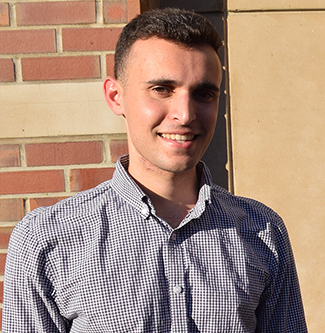
Troy Strull
For Troy Strull, Religion 359, “Culture in Diaspora: The Jews of Spain,” taught by Professor Jessica Marglin, was a bit of a family affair. His dad’s side of the family is Jewish, and his mom’s side were Greeks who interacted with the Sephardic Jews discussed in the class. He chose the class out of the options to fulfill one of his general education requirements because he believed it would allow him to learn more about his family’s roots.
“The idea to learn more Jewish history in an academic sense, rather than just hearing stories that my family told me, was appealing to me,” he said.
The class, which covered culture, commerce, language and identity among the Jewish diaspora from Spain and Portugal, ended with a final paper for which students could use the Visual History Archive as a primary source of testimony. Students even received a brief tutorial on how to use the database from curator Crispin Brooks. Strull, who wasn’t familiar with the Visual History Archive previously, was amazed about how great a resource it could be.
“People’s stories about their lives, most of them just get lost, but somebody’s taking the time to document all these people’s experiences because it’s so important,” he said. “I think it’s incredible.”
For one student, a class on Sephardic Jews was a family affair.
For his final paper (download below), Strull focused on the treatment of Sephardic Jews in Greece during World War II, in a further tribute to his family history.
“It was interesting for me to look into how each different set of my ancestors interacted with each other,” Strull said.
The paper zeroed in on the Greek city of Solonika because Marglin had told Strull that the town had a larger Jewish population than other areas of Greece. Strull used about five first-hand testimonies from the Visual History Archive to form the factual basis of his paper.
“I just started looking for testimonies that were in English and from Solonika,” he said. “I would jot down what looked interesting, and I wrote my paper from there.”
Though all students’ papers for Religion 359 focused on Sephardic Jews and utilized the Visual History Archive, specific topics varied considerably. Two of the students, Dana Austin and Lara Sassounian, both chose to write about the Ladino language and were even invited by Marglin to present at the 5th annual ucLadino symposium at UCLA March 2-3.
Strull said he was impressed by the Visual History Archive, and would chose to use it for further research and papers when topical.
“It would definitely be the first database, the first archive that I think would be the most useful to me or anybody who was trying to get eyewitness accounts of the Holocaust,” he said.